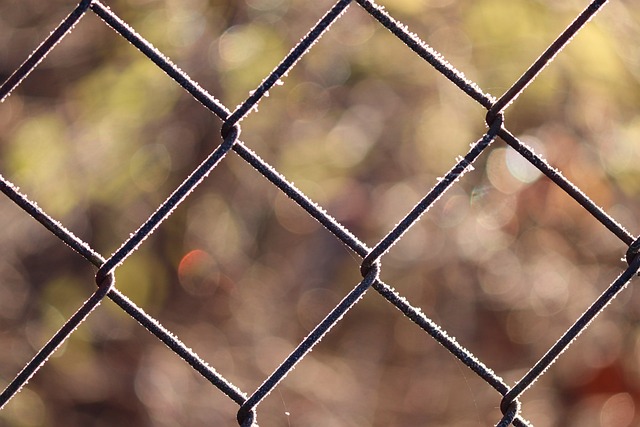Introduction
Protecting and enhancing your wooden fence investment starts with staining and sealing. This comprehensive guide delves into the art of fence staining, offering insights on understanding its benefits, selecting the perfect stain, and preparing your fence. From cleaning and repairing to step-by-step application and choosing the ideal sealant, we cover all aspects for a durable, visually appealing finish. Learn how to maintain your wooden fence over time, ensuring it stands strong against the elements while retaining its beauty.
- Understanding Fence Staining: Benefits and Types
- Choosing the Right Stain: Color, Finish, and Durability
- Preparation: Cleaning and Repairing Your Wooden Fence
- Applying Fence Stain: Step-by-Step Guide
- Sealing for Protection: Best Practices and Products
- Maintenance Tips for Longevity and Beauty
Understanding Fence Staining: Benefits and Types
Fence staining is an art that transforms your wooden fence into a visually appealing feature, offering far more than just aesthetics. By applying a stain, you’re not only enhancing the beauty of your outdoor space but also protecting your fence from environmental elements. The process involves locking in natural wood tones or adding vibrant new colours, with various stains available to suit different preferences and protective needs.
The benefits are twofold: first, it enhances the overall look of your property, creating a welcoming atmosphere; second, staining acts as a barrier against water, UV rays, and other harsh conditions that can cause wood to rot or fade. There are multiple types of fence stains on the market, each with unique characteristics. Water-based stains offer easy application and minimal odour, while oil-based options provide deeper penetration and longer-lasting protection. Solid colours provide dramatic changes, whereas transparent stains enhance the natural wood grain without altering its appearance.
Choosing the Right Stain: Color, Finish, and Durability
When choosing a fence stain, one of the most important considerations is color. Different stains offer a range of shades, from natural wood tones to vibrant, bold colors. Select a hue that complements your home’s exterior and the surrounding landscape. Remember, lighter colors reflect sunlight, while darker shades absorb it, affecting the fence’s heat retention and drying time.
Finish and durability are equally crucial. Stains can vary in terms of transparency, with some offering a sheer finish to highlight wood grain, while others provide an opaque coat for complete color coverage. Durability is also key; opt for stains designed to withstand weather changes, UV exposure, and mold growth for longer-lasting results.
Preparation: Cleaning and Repairing Your Wooden Fence
Before applying stain or sealant, your wooden fence needs proper preparation to ensure optimal results. Start by thoroughly cleaning the fence using a pressure washer or stiff-bristled brush and warm soapy water. This removes dirt, grime, and any existing stains. Pay special attention to areas with rot, peeling paint, or damaged wood, as these must be repaired before sealing. Sanding the affected sections will help create a smooth surface for even stain absorption.
Use a deck repair kit or wood putty to fill in any gaps or cracks, then sand again until the surface is smooth and uniform. Ensure all repairs are dry before proceeding, as wet or sticky patches can affect the final finish. Cleaning and repairing your wooden fence properly will not only extend its life but also enhance the overall aesthetics, ensuring a more durable and visually appealing result after staining and sealing.
Applying Fence Stain: Step-by-Step Guide
Applying fence stain is a straightforward process that can transform your wooden fence, enhancing its beauty and protective capabilities. Start by cleaning the fence surface thoroughly to remove any dirt, dust, or debris using a pressure washer or a brush with mild detergent. This step ensures optimal adhesion for your stain. Once the fence is dry, choose your desired color and apply an even coat of wood stain using a roller or brush. Begin at one corner and work in small sections, making sure to overlap each pass slightly to create a seamless finish. Allow the first coat to dry completely before adding additional coats for a richer, more vibrant color. This multi-layered approach not only deepens the hue but also provides extra protection against fading and water damage.
Sealing for Protection: Best Practices and Products
Sealing is an essential step in fence staining and maintenance, offering much-needed protection against the elements. The primary goal is to shield the wood from moisture, UV rays, and extreme temperatures, which can cause fading, cracking, and rot over time. When choosing a sealant, opt for high-quality products designed specifically for outdoor use and wooden surfaces. Water-based sealants are popular due to their low odor and quick drying time, while oil-based options provide deeper penetration and longer-lasting protection.
Best practices include applying the sealant in thin, even coats, allowing each layer to dry thoroughly before adding another. This technique ensures maximum coverage without leaving visible streaks or thick films. Regular maintenance is key; reapply the sealant every one to two years, or as recommended by the manufacturer, to maintain its protective barrier and preserve the fence’s appearance.
Maintenance Tips for Longevity and Beauty
Regular maintenance is key to keeping your wooden fence looking its best and ensuring its longevity. After staining, it’s essential to establish a yearly cleaning and sealing routine. Start by gently sweeping or brushing away any dirt, debris, or mildew that may have accumulated on the fence’s surface. This prevents buildup, which can negatively affect the stain’s durability.
Use a mild detergent and a soft-bristled brush for a gentle yet effective clean. Rinse thoroughly with water and allow the fence to dry completely before sealing. Applying a fresh coat of sealer every 1-2 years will create a protective barrier against the elements, UV rays, and potential stains. This simple maintenance routine will keep your fence vibrant and beautiful for years to come.
